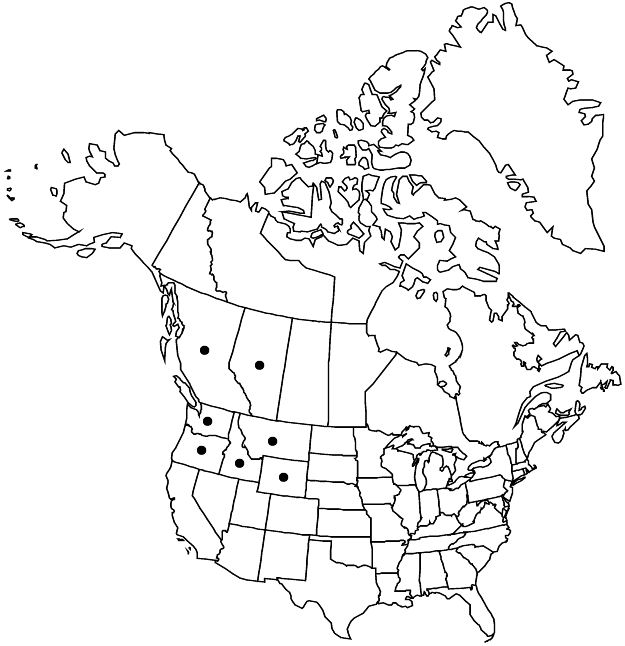Viola orbiculata
in B. D. Jackson et al., Index Kew. 2(4): 1208. 1895.
Plants perennial, caulescent, not stoloniferous, 5–9 cm. Stems 1–5, prostrate or erect, leafy proximally and distally, usually glabrous, from current and/or previous year’s growth, on usually vertical, fleshy rhizome. Leaves basal and cauline; basal: 3–11; stipules deltate to lanceolate, margins entire, apex acute to acuminate; petiole 2.1–10.5 cm, glabrous or pubescent; blade usually orbiculate to broadly ovate, sometimes reniform, 1.4–5.3 × 1.4–5.3 cm, base cordate, margins crenate to serrulate-crenulate, eciliate or sparingly ciliate, apex usually obtuse, rarely acute, abaxial surface usually glabrous, adaxial surface sparsely pubescent; cauline similar to basal except: stipules lanceolate to ovate, margins usually entire, ciliate; petiole 0.7–1 cm, glabrous or pubescent; blade 1.2–2 × 1.1–1.4 cm. Peduncles 2.7–5.6 cm, glabrous. Flowers: sepals narrow to broadly lanceolate, margins eciliate, auricles 0.5–1.5 mm; upper 2 and lateral 2 petals deep lemon-yellow on both surfaces, lower 3 and sometimes upper 2 brownish purple-veined, lateral 2 usually bearded, lowest 8–17 mm, spur usually yellow, sometimes whitish, gibbous, 1.5–2.5 mm; style head bearded; cleistogamous flowers axillary. Capsules ellipsoid, 6–8 mm, glabrous. Seeds light to dark brown, sometimes mottled with white, 2–2.3 mm. 2n = 24.
Phenology: Flowering May–Aug.
Habitat: Alpine and montane slopes, moist montane coniferous forests, canyons, meadows, lake margins
Elevation: 700–1700 m
Distribution

Alta., B.C., Idaho, Mont., Oreg., Wash., Wyo.
Discussion
During winter, the basal leaves of Viola orbiculata are appressed to the ground under the weight of snow. The leaves overwinter and are often partly or entirely green after the snow has melted. Mature plants possess 3–11 basal leaves, some derived from previous years and others from the current year’s growth. Occasional plants are found with short, thin stems rooted at the tip and producing a rosette of leaves and stems, showing the close relationship with V. sempervirens.
Selected References
None.